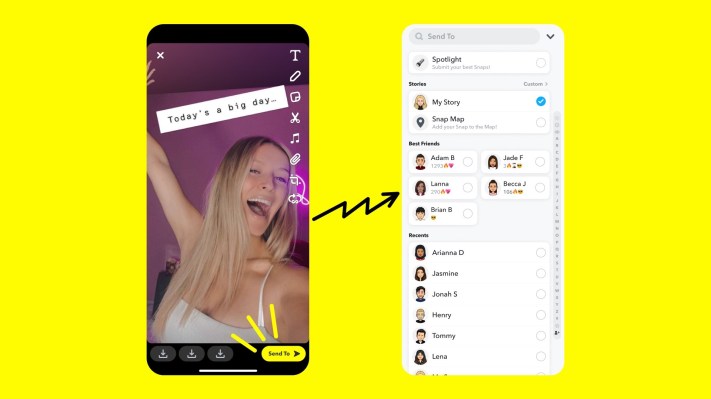Once an ephemeral messaging app, Snapchat is trying to solidify itself as a platform for creators to turn a profit. Today, Snap announced that it plans to introduce mid-roll advertisements during Snapchat stories for Snap Stars (which is what the platform calls its biggest creators, who must apply for the Snap Star distinction).
A Snapchat spokesperson told TechCrunch that this feature is already in very early beta for a small set of U.S.-based creators, but the platform plans to roll it out more broadly to Snap Stars in the coming months. These advertisements will appear as mid-roll ads inside of their stories, and the creator will earn a share of the ad revenue. That payout is determined by a payment formula, which weighs factors like posting frequency and audience engagement. Snapchat declined to comment further on the nature of these payouts.
Through its TikTok clone Spotlight alone, Snapchat paid creators $250 million last year. Creators can also profit on Spotlight through in-app gifting and Snap’s creator marketplace, which allows brands to more easily collaborate with AR developers and influencers.
This test follows ongoing discussion among creators about the differences between creator fund payouts and revenue sharing models. Longtime YouTuber and Vidcon co-founder Hank Green pointed out last month that the size of TikTok’s creator fund has not grown at the same rate as its user base, meaning that over time, TikTok creators are earning less for their contributions to the platform — plus, when TikTok’s parent company ByteDance earns $58 billion in a year, the size of a $200 million creator fund feels paltry (even if it’s supposed to grow to $1 billion). Meanwhile, YouTube paid out $10 billion from ad revenue sharing over the last three years. But at the same time, short-form platforms like TikTok and Snapchat Spotlight would feel unusable if they had as many ads as YouTube.
With this test, Snapchat is attempting to combine the models of both creator funds and revenue sharing. But it’s hard to say how advantageous this product will be for creators when the payout formula remains a mystery.
